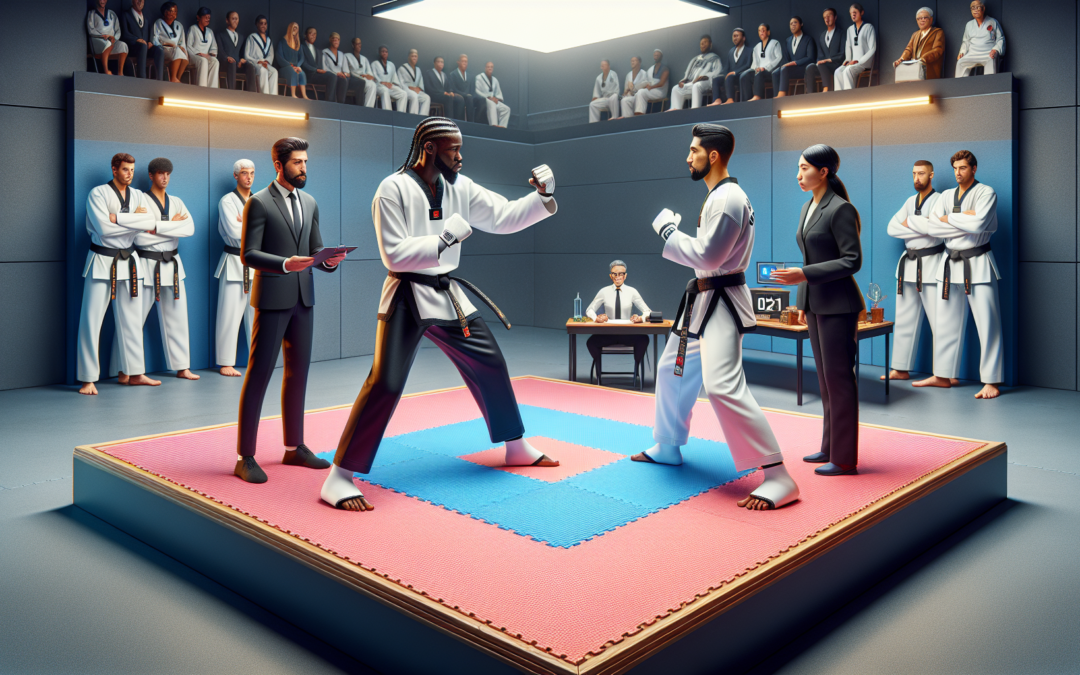“`html
In the electrifying world of Taekwondo, where precision meets passion and discipline encounters dynamic movement, understanding the intricate web of Taekwondo competition rules and scoring is essential. These rules not only shape the very spirit of competitive play, but they also fortify the bridge between sportsmanship and strategy. As athletes don their iconic uniforms and step onto the mat, every kick and punch reflects an adherence to meticulously crafted regulations that encapsulate the heart and soul of this timeless martial art. Come and unravel these essential elements to see how they illuminate the path to victory and foster a sense of respect that defines Taekwondo’s rich sporting legacy.
Unlocking the Essence of Taekwondo: Competition Rules and Scoring
The Origins: Where Tradition Meets Modern Rules
The heart of Taekwondo pulsates in its rich history, where age-old traditions find resonance in modern rulebooks. As Cherry Hill, New Jersey stakes its claim as a hub for this dynamic martial art, local competitors dedicate themselves to mastering not only physical prowess but the strict guidelines that govern this sport.
Understanding these rules might seem daunting at first, but for participants committed to true mastery, it is an essential part of their journey. A good grasp of current competition rules fosters respect, encourages strategic thinking, and hones the skills required for excellence both on and off the mat.
Grading the Battle: The Role of Scoring
At the core of any Taekwondo competition is the scoring system, where every move is meticulously evaluated against an established framework. Each kick or blow represents a tactical decision—it’s where technical expertise meets real-time strategy.
- Point Allocation: Points are awarded for valid strikes to the opponent’s scoring areas, specifically the trunk protector and the face. Notably, a kick to the head provides additional points, reflecting both risk and skill level.
- Electronic Scoring: With the advent of technology, the inclusion of electronic body protectors and headgear has revolutionized scoring, minimizing human error and bias. Cherry Hill practitioners thrive in this modernized competitive landscape.
- Referee Judgment and Deductions: Referees play a crucial role, managing penalties that constrain fellow athletes. Actions like turning one’s back in a defensive maneuver or exceeding passivity are met with deductions, ensuring conduct adheres strictly to discipline.
Cherry Hill’s Legacy of Taekwondo Excellence
Cherry Hill has become emblematic of a community where Taekwondo thrives, with local clubs nurturing generations of skilled Taekwondo warriors. Each competition becomes a new chapter in Cherry Hill’s expansive martial arts saga—a culmination of practice, perseverance, and passion.
The town’s reputation is not solely defined by victories and accolades stored in cases; it’s about the transformation that Taekwondo inspires amongst all those who engage with its alluring tournament culture. The discipline fosters a local spirit where values of honor and resilience forge the essence of competitive play.
Determining Victors: More Than Just Numbers
Victories in Taekwondo are famously nuanced—relying on a mixture of clear action points and intangible prowess that lies beyond clear scoring metrics. While precise scoring and objective rule-following remain paramount, true proficiency is characterized by a merging of technique, creativity, and adaptability under pressure.
- The Power of Strategy: An adept athlete utilizes every ounce of mental acuity to outmaneuver opponents. This tactical element requires reflexive decision-making where the athlete gauges their adversary’s maneuvers and responds with timed excellence.
- Cultural Respect and Etiquette: Fair play extends beyond figure and form—the unwritten code of bowing before matches and respecting opponents drives the cultural tapestry that separates Taekwondo from other sports, instilling dignity in competitors and competition alike.
Beyond the Mat: Impacts in Lifelong Practice
Engagement in Taekwondo transcends competition. Dedicated practitioners at places like Taekwondo Academy go beyond seeking victory; they’re on a path to discovering deeper discipline, found within day’s dedicated training and sustained focus.
Here lies the true power—where lifelong influence stretches beyond wins and losses, affecting character, community engagement, and personal growth. Participation results in the building of bridges—locally within Cherry Hill—and metaphorically in personal circles that reverberate with values learned on festival grounds and in the classroom.
A Digital Community: #TeamCherryHill
In a world where social fabric is evenly interwoven between physical engagement and digital footprint, Taekwondo’s prevalent influence extends online. Platforms like Instagram offer participants opportunities to showcase talents, insights, and training tales with Taekwondo enthusiasts near and far.
By embracing these digital touchpoints, practitioners from Cherry Hill can boost their worldwide connections, exchanging ideas and following trends—a process which democratizes elite philosophies and lays terrain for fresh, impactful conversations across the Taekwondo universe.
The Final Bow
Thus emerges a clear picture of Taekwondo in the geographic heart of Cherry Hill, where competition rules and scoring peel back layers revealing more about the individual practitioner, the revered dynamic sport, and the resilient community that nurtures growth within its amateur dojo walls to the center-stage professional leagues beyond.
Standing at the forefront of every Taekwondo match lies not just a potential winner or runner-up but a perennial competitor on the journey of perpetual transformation—a journey fueled by the dreams that precede them exactly where thousands have aspired before.
“`

